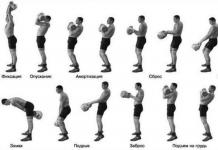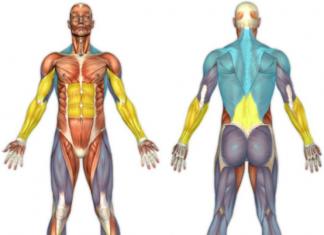Prevention of visual impairment in children is important at any age, because the organ of vision develops and matures with the child! Perceiving light stimuli from excessive effort and strain, the eyes get tired and reduce the efficiency of their work. Ophthalmologists warn that regular overexertion can lead to spasm of the eye muscles, as a result of which the eyes stop responding to changes in focal length. Among the causes of visual impairment in children are the presence of chronic diseases, poor nutrition, hereditary predisposition, high visual load, prolonged static stress, problems with the spine, non-observance of the day regimen, a decrease in the duration of night sleep, improper organization of classes at home and in educational institutions. The main cause of visual hygiene disorders in preschoolers is television. Reading gives a serious load on the organs of vision of children. The process consists in the movement of the gaze along the line, at which stops are made for the perception and comprehension of the text. It is no secret that at present the most urgent problem of working with a computer is its effect on the eyesight of children and adolescents. Unpleasant sensations in the eye area, such as a feeling of fatigue, discomfort in the form of a veil in front of the eyes, unclear outlines of objects are observed at different times in 40-92%, and daily in 10-40% of users. It has been proven that fatigue develops after 30 minutes of continuous work at the computer in every third high school student and in every second child of 7-9 years old. In children with reduced visual acuity, the coefficient of fatigue increases by almost 4 times.
How to prevent visual impairment in children?
Limit visual stress when using a computer: - do not allow children under 2 years old to play computer games and watch TV programs, reduce the duration of work at the computer for children after 10 years of age to two hours a day, ensuring a sufficient distance to the computer monitor - 40-60 cm;

|
Limit visual stress when using a TV:
- sit on the sofa in front of the TV: the screen should be at eye level, not higher or lower;
- position the light sources so that they do not cast glare on the screen;
- do not watch TV in complete darkness, keep a dim lamp with diffused light on, out of sight of adults and children watching TV.
- exclude uncontrolled viewing of TV programs by children: ensure the distance to the TV screen is no closer than 2-3 meters; limit the time for watching TV programs in the classroom to 10 minutes. - in class 1, up to 20 min. in 3-4 classes, up to 25 min. in grades 5-7, up to 25 min. - in grades 8-11.
Observe the hygienic regulations for conducting classes:
- doing homework for students in grade 1 - up to 1 hour, in grade 2 - up to 1.5 hours, in grades 3-4 - up to 2 hours, in grades 5-6 - up to 2.5 hours, in grade 7 - up to 3 hours, in grades 8-11 - up to 4 hours;
- the duration of continuous learning activities of schoolchildren (reading, writing should not exceed 7-10 minutes for students in grades 1-4, 10-15 minutes for students in grades 5-11.
- the duration of continuous educational activity of preschoolers should not exceed: 10 minutes. for children from 1.5 to 3 years old; 15 minutes. - from 3 to 4 years old; 20 minutes - - from 4 to 5 years; 25 minutes - from 5 to 6 years old; 30 minutes. - from 6 to 7 years old. The total duration of home lessons for younger children up to school age during the day should not exceed 40 minutes, while rest breaks are required every 10 minutes, switching the attention of children so that the child looks into the distance; it is also necessary to alternate calm games with active ones, reducing the time of games with significant visual stress.
Observe reading hygiene: it is forbidden to read in the dark, read while holding a book at a close distance, look at a monitor in a dark room without additional lighting, read or play computer games while driving.

|
Choose prints for children of the appropriate age, with clear print on white paper.
Create optimal lighting conditions on the child's desktop at home and in educational institution(left-handed natural light, adequate artificial light).
Ensure correct seating of the child during classes: the distance from the eyes to a notebook or book should be at least 30-45 cm for students in grades 1-4 and at least 30-45 cm for students in grades 5-11; it is strictly forbidden to read lying down, hunched over and in a moving vehicle, it is harmful to vision.
Lead an active lifestyle: physical activity should be appropriate for the age of children; a sufficient, at least 3-4 hours, stay in the fresh air is necessary.
Eating right: organization healthy eating provides for the use of foods high in vitamins A and C. These are cottage cheese, meat, kefir, fish, carrots, apples, dried apricots, blueberries, currants, lemons.
Observe the daily routine with alternating work and rest.
Compliance with the recommendations and hygienic rules will preserve the vision of children and adolescents for many years!
Exercise to maintain visual acuity
Suggest to the child:
- Focus. Extend the thumb of the left hand in front of you at eye level at a distance of about 40 cm. For 5-10 sec. focus your gaze on your finger, then, having found a point in the distance, look at it for 5-10 seconds, then again at the finger and again at a distant point. Repeat 7-10 times.
- Relieve tension. Place the thumb and middle fingers of one hand on both sides of the nose closer to the eyes, and press the index finger between the eyebrows. Then make circular movements with three fingers for 1 minute. Repeat 4 times.
- Perform the exercise "sleep". Performed after each exercise. The child closes his eyes, rubs his palms together and puts them on his face. Sits like this, breathing deeply, 1-2 minutes.
A set of exercises for the prevention of visual fatigue
The exercises are performed while sitting in a comfortable position: the spine is straight, the eyes are open, the gaze is directed forward. Duration of classes 3-5 minutes.
- Direct your gaze to the left - straight, right - straight, up - straight, down - straight without delay (from 3 to 10 times).
- Shift your gaze diagonally: left - down - right, right - up - straight, right - down - straight, left - up - straight and gradually increase the delay in the abducted position, breathing is arbitrary, but you need to make sure that it is not delayed (3- 10 times).
- Make circular eye movements: left and right, at first faster, then as slowly as possible (from 1 to 10 circles).
- Look at the tip of the nose, then into the distance (5 to 7 times).
- Look at the tip of a finger or pencil held at a distance of 30 cm from the eyes and then into the distance (5 to 10 times).
- Look straight ahead steadily and motionless, trying to see more clearly, then blink 5 to 7 times.
- Massage the eyelids, gently stroking them with the index and middle fingers in the direction from the nose to the temples. Or: close your eyes and with the pads of your palms, very gently touching, run along the upper eyelids from the temples to the bridge of the nose and back (10 times at an average pace).
- Rub your palms together and lightly, without effort, cover your previously closed eyes with them in order to completely block them from light (for 1 min). Imagine plunging into total darkness. Open your eyes (5 to 7 times).
From the moment a child becomes a schoolboy, his vision begins to undergo increased stress, which is complemented by watching cartoons and protracted computer games. During this period of life, the development of not yet fully formed organs of vision is very easy to disrupt, especially if there is no regime of work and rest. As a rule, this is what happens: according to statistics from the World Health Organization, every fourth child of school age has some kind of eye disease, among which myopia is the most common. According to doctors, vision problems only in some cases are hereditary in nature - most children suffer through the fault of their parents, who have improperly built the daily routine.
Experts do not recommend exposing children to school loads before the ciliary muscle of the eyes is formed, which is responsible for the ability to see objects at different distances. Its development, as a rule, ends by 7-8 years, and before this age it is not worth testing it for strength. Indeed, according to statistics, among children who became first graders at the age of 6, there are twice as many myopic ones as among schoolchildren who went to first grade at 7 or 8 years old.
Source: depositphotos.com
In the absence of vision problems, the child should take a break from classes every 40 minutes, and in case of myopia - every half hour. During the 10-15 minute rest, do not watch TV, read, play on the computer or engage in other activities related to eye strain. Better to play outdoor games.
The duration of home lessons for children of primary grades should not exceed 1 hour, for middle grades - 2 hours. If a child visits additional classes it is worth remembering that they should not last more than 1.5 hours on school days and 3 hours on weekends. At the same time, electives should not begin earlier than 8.00 and end later than 20.00.
To strengthen the immune system, it is advisable for a child to be outdoors every day, playing outdoor games or playing sports, but traumatic sports should be avoided. Head bruises of varying severity can cause myopia or make it worse if it already exists.
 Source: depositphotos.com
Source: depositphotos.com
Computer games are a favorite pastime of modern children. If you do not control such leisure, computer visual syndrome may occur: a disorder that manifests itself in dryness, redness of the eyes, frequent blinking, difficulties in focusing vision at different distances, etc. , often becomes the basis for the development of accommodation spasm or lengthening of the eyeball and, as a result, myopia.
To prevent eye fatigue and related diseases, the child must comply with the norms of continuous work at the computer (SanPiN):
- for elementary grades - 15 minutes;
- for middle classes - 25 minutes;
- for seniors - 40 minutes.
The "insidiousness" of the computer lies in the fact that, being carried away by the game, children do not notice fatigue, although it has been established that the first symptoms of visual fatigue (absent-mindedness, decreased blinking frequency) appear after 15 minutes of work, and after 25-30 minutes, certain signs of impairment vision can already be recorded by a specialist.
Parents who are concerned about the health of their child should not allow him to play on the computer in total for more than 1 hour a day; if possible, they should distract the student with other activities.
 Source: depositphotos.com
Source: depositphotos.com
The correct organization of the workplace will slightly reduce the burden on vision:
- the child's line of sight should be in the middle or upper half of the screen;
- the optimal distance to the computer monitor is 60-80 cm. It is better to choose a monitor with a high resolution to reduce the effect of screen flickering;
- light and direct sunlight should not fall on the monitor;
- you cannot work at the computer in the dark or twilight. It is better if the light source is at the same time to the left of the child.
The student's workplace should be well lit. In addition to natural lighting, the room needs artificial light sources - the main (chandelier) and additional (table lamp with a power of 40-60 W). It is better to place a table lamp for a right-handed child on the left, for a left-handed person, on the contrary, on the right. At the same time, it is important to correctly combine lighting sources: in the dark, it is unacceptable to study only with the light of a chandelier or lamp, and during the day it is advisable to turn on only the lamp.
The optimal distance to the eyes when reading and writing is at least 35-40 cm, which must be taken into account when choosing a desk for a child. In addition, while working, he should not slouch, so the chair should not be too high and soft.
 Source: depositphotos.com
Source: depositphotos.com
It is no secret that a strong, hardy organism is less susceptible to diseases, including eye diseases. A diet rich in vitamins and trace elements will provide optimal conditions for the retina and support vision. The most useful for these purposes are cottage cheese, kefir, beef, rabbit meat, foods high in vitamin A (carrots, apricots, pumpkin, citrus fruits), boiled fish, as well as berries (blueberries, cranberries, lingonberries) and herbs (dill, parsley) ...

According to the WHO, there are about 1.5 million blind children in the world. However, in 40% of cases, vision loss at an early age can be prevented, experts say.
Annual monitoring carried out by the Ministry of Health of Belarus shows that visual impairment is in the lead among other diseases in minors. The chief freelance children's ophthalmologist of the Ministry of Health of Belarus Viktoria Krasilnikova told reporters about methods of preserving vision, prevention of common eye diseases and stereotypes.
How myopia and squint develop in children
Such common visual defects as myopia and strabismus are most often not congenital: the child acquires them as he grows up.
This fact is confirmed by global statistics: congenital myopia accounts for only 5% of cases. The majority of children are born with farsightedness (hyperopia) - this is the age "reserve" that provides the conditions for the correct development of the organ of vision as they grow up.
Usually baby goes to school with a certain margin of hyperopia, he has the potential to have normal vision throughout his life, but in our time such a reserve is very quickly eliminated. Gadgets are to blame. The habit is tied to early years: the child does not want to eat, is capricious, does not know what to do with himself, there is only one way out - to give a tablet or a mobile phone.
So it turns out that the real scourge of our time is children's myopia (myopia). Complications of this disease at an early age are rare, but later the problem is aggravated, and ophthalmologists hardly cope with it.
Most often, the predisposition to myopia is transmitted at the genetic level. Of course, unfavorable environmental conditions, long-term work with small parts or gadgets at close range, make their contribution. As a result, doctors diagnose school and occupational myopia. And this is a worldwide problem.In Europe, about 15% of students are myopic, while in Japan this level is 85%. It turns out that the higher the computerization indicators of the country, the more people with vision problems there are.
Overuse of gadgets, stress on a child's eyes at school and after school can also lead to strabismus. The tendencies are that this disease "matures" over time. Previously, children aged 3 to 6 years suffered from this ailment, and it could be overcome either by surgical or therapeutic methods even before school. Now children start to squint at the age of 6-8 years. "When we read, look at the screen of the mobile, the eyes turn to the center. If the organ of vision is often in this position, then the internal rectus muscles that turn the eye are subject to tension, spasm develops, they remain in a tense state. Relax and return the eye to they can no longer be in a normal position, "the doctor explains. The prevalence of eye problems in children confirms and total number visits to an ophthalmologist: about 6 thousand new cases of refractive errors are detected every year (the eyes cannot clearly see the image of objects).
How to prevent a problem so that later it won't heal
Parents should make sure that the child alternates half an hour of work with a similar period of time for rest. That is, after working with a textbook or playing computer games, walks and help around the house will be effective. "Prevention of myopia should begin precisely with preschool age... When a child goes to school, it's too late to carry out any manipulations, "the doctor of medical sciences is sure. The rules of prevention are very simple. The book should be at arm's length, you should not read lying down and in transport. Entertaining children with gadgets during travel is also not The TV should be located at a distance of 3 m.
Eye injuries have a great impact on reducing visual acuity in children. Parents, as well as educators and teachers, need to explain to the younger generation the safety rules for active games.
Dispelling myths: lenses can be worn by children, mesh glasses are no longer relevant
Some sports have a productive effect on the preservation of visual acuity. "Most often, we came across such a postulate that if a child has myopia, he immediately falls into the group of restrictions on classes physical education... In fact, running, swimming, skiing at moderate intensity (heart rate not higher than 140 beats per minute) have a good effect on the development of the child's organ of vision. However, there are also limitations. If there is a tendency to myopia, then the performance of cyclic exercises and an increase in heart rate up to 180 beats per minute as a result of acrobatic exercises, jumping rope can lead to a deterioration in the child's ability to work at close range, "the expert dispelled the myth.
Myopia is treated with glasses, contact lenses, surgery, or laser correction. At the same time, there is another stereotype: lenses are contraindicated for children, this method of vision correction should be addressed at an adult age. However, contact correction can be started at an early age. "There are no specific contraindications for children. They are the same as for adults - inflammatory diseases, deformation of the cornea (then you should wear special hard lenses) ", - says the ophthalmologist. At the same time, contact lenses have a great advantage - they do not change the size of the image.
But to abuse special glasses that help preserve vision and prevent diseases, neither children nor adults should be. Modern gadget screens do not flicker. Hole-hole glasses and other cunning gadgets disappear into oblivion along with bulky old monitors. Doctors believe that when working at a computer for a long time and other loads on the eyes, it is most effective to use tear substitutes (special drops that eliminate dry eyes).
Maria SHNA,
BELTA.
January 25, 2016 10:52
By fabiosa
Vision can change over time. For some, it remains excellent until old age, but in the modern world, vision often begins to deteriorate from childhood. Through an oversight of parents, children receive an unnecessary harmful load, which, as a result, can cause myopia. Myopia develops very quickly from 7 to 9 years old and from 12 to 14 years old, and it is especially important to protect preschool children from excessive stress on the eyes, when the eye muscles are just forming.
All caring parents who want to preserve the vision of their children will benefit from these tips from an experienced ophthalmologist - associate professor of the Department of Ophthalmology at the Russian National Research medical university Ministry of Health of Russia Nina Maksimova.
1. Eyes need rest.
A child with good eyesight should take a break from class every 40 minutes. With a little myopia - every 30 minutes. Rest for the eyes is when the child is not sitting with a tablet or phone, but running, jumping, walking, looking out the window or doing gymnastics for the eyes.
2. The book or notebook should be kept at a distance of 35–40 cm from the eyes.
In this position, the eye muscle will be less strained and the eyes will be less tired.
 mama.ua
mama.ua
3. Temper and strengthen the child's immunity, walk more on the street.
Children who are often sick are more at risk of getting myopia. Therefore, try to improve the health of the child as much as possible, temper him and walk in the fresh air for at least 2 hours a day.
4. Limit the time your child spends at the computer or TV.
Follow this simple rules to reduce the risk of visual impairment:
- the younger student can spend at the computer no more than 15–20 minutes a day, the older one - no more than 1 hour. If you need to extend the time to complete the task, then it is imperative to take a break for the eyes every 15 minutes;
- younger students should watch TV no more than 30 minutes continuously, older ones - no more than 1 hour (the distance should be no closer than 2.5 meters); it is especially important to reduce eye strain on school days.
 mirror.co.uk
mirror.co.uk
5. Introduce foods that are good for the eyes in your child's diet.
Such products include: cottage cheese, boiled fish, beef and beef tongue, turkey meat, rabbit meat, carrots, cabbage and greens. Also, if possible, try to buy blueberries, lingonberries, cranberries for your child. When choosing a vitamin complex, remember that multivitamins with microelements, calcium preparations with vitamin D, and phosphorus are especially useful for the eyes.
 koolinar.ru
koolinar.ru
6. Follow the doctor's advice - if the child already has myopia and has been prescribed glasses, then it is imperative to wear them.
At the same time, they must be worn during stress: at school, when you need to look at the blackboard, while going to the cinema or theater, at home watching TV. If the child does not want to put on glasses and squints all the time, this can provoke an even faster development of myopia.
7. Do not try to be ahead of time - do not teach children to read earlier than 4 years old, do not send to school earlier than 7 years.
These tips are especially important to follow if you already have nearsighted adults in your family, because vision problems are hereditary. The muscle that provides good vision is only fully formed by the age of 7–8. Earlier, constant eye strain will lead to vision problems. According to statistics, there are 3 times more myopic among first-graders six-year-olds than among children who went to first grade at the age of 7.
For the same reason, babies under 2 years old should not be allowed to watch TV; preschoolers should not be allowed to play or watch cartoons on tablets and smartphones.
In our computer age, this question is probably the most pressing one. We can immediately say that the main enemy of good vision is to lead an unhealthy lifestyle.
Fatty and sweet high-calorie foods that do not contain beneficial trace elements and vitamins have a detrimental effect on the eyes. It's time for a person to think that our life depends on sight, 90% of all information we receive thanks to our eyes.
Therefore, it is better to give up fast food.
Computer.
The computer "bestows" the eyes with CSV syndrome, that is, computer visual syndrome. The syndrome is easy to recognize: redness, burning, fatigue, and blurred vision, especially when reading. If you sit at the computer without thinking about your eyesight, you can easily "get" the "dry eye" syndrome. Working at a computer, a person simply forgets to blink, thereby the cornea of the eye is poorly moisturized. Worse, if the air conditioner is still running in the room, it dries not only the air, but the eyes. Hence the conclusion that the worst thing for the eyes is working at a computer in an air-conditioned office.
Bad habits.
Smoking. "Tobacco blindness", as ophthalmologists call the syndrome, when tobacco smoke toxicly affects the retina of the eye. Ladies also irritate the mucous membrane of the eye, which is why smokers have watery and inflamed eyes.
Alcohol. "Alcoholic intoxication of the optic nerve", as ophthalmologists call alcohol syndrome, as a neurotoxin, affects the cerebral cortex and visual centers.
This does not mean at all that you cannot drink a glass of wine on a holiday. One glass will not harm your eyesight.
A healthy lifestyle is the key to perfect vision. But besides this requirement, you can also recommend:
Visit to an ophthalmologist. It is best to visit this doctor once a year. After all, a year of hard work could bring harm to the eyes, which at first is noticeable and will not be. But an ophthalmologist will notice these "problems" and prescribe treatment.
Don't lie down. A bad habit most often seen in schoolchildren. The eyes get tired instantly with this reading. The optimal distance from the eye to the sheet of the book is 35 cm. And when reading lying down, the book is much closer to the eyes, which makes them experience strong stress.
Lighting. The work table must be lit. Even in the elementary grades of school, we were taught: for a right-handed person, the light should be on the left, for a left-handed person, on the right. It is strictly forbidden to read in a poorly lit room. Also, viewing TV in the dark, sharp fluctuations in brightness ... All this provokes visual receptors.
UV protection. It is not worth the money to buy good glasses with glass, not plastic. Plastic transmits UV rays, but the glass protects the eyes from them.
Nutrition. Blueberry - This small berry increases the acuity of night vision at times. And if the work requires constant eye strain, then blueberries will help. Therefore, you can not skip a single season, so as not to eat enough of this berry, and not to prepare it for future use. Berries can be frozen, dried or drunk teas from berries and leaves. Just two tablespoons a day is enough to get all the vitamins and minerals in it. If the berry is dried, then you must first leave it in water overnight, and then eat it.
And vitamin A, which is so necessary for our eyes, will help "get" carrots and beef liver.
Exercises. When working at a computer, reading or watching TV, do not forget about eye exercises. Best exercise- is to look at objects that are far from us. You can look at the sky, the horizon, examine every leaf on the tree ... At this very time, the eyes are resting, the tension recedes. Viewing nearby objects will only spoil your eyesight.
Conclusion: look out the window more often.
And describing a circle or an eight with an eyeball will help to quickly relieve stress for those who often write, for example, pupils and students.
Take care of your eyes! Take care of your eyes!



































